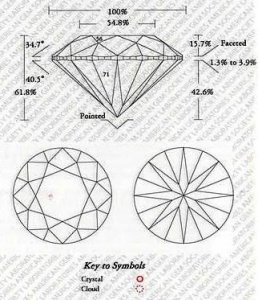Hi,
Please help! I''m struggling to choose between these two diamonds...
Diamond A
Shape: Round
Carat: 0.88
Cut: Very Good
Colour: E
Clarity: VS1
Polish: Very Good
Symmetry: Very Good
L/W Ratio: 1.00
Depth %: 63.8%
Table %: 56.0%
Measurements: 6.07 x 6.10 x 3.88 mm
Fluorescence: None
Girdle: Medium
Culet: None
and
Diamond B
Shape: Round
Carat: 0.88
Cut: Very Good
Colour: H
Clarity: VVS2
Polish: Good
Symmetry: Good
L/W Ratio: 1.01
Depth %: 62.6%
Table %: 59.0%
Measurements: 6.13 x 6.17 x 3.85 mm
Fluorescence: None
Girdle: Thin
Culet: Small
Diamond A is around 300 Euros more than Diamond B.
Will I notice the colour and clarity differences?
Many thanks!
James
Please help! I''m struggling to choose between these two diamonds...
Diamond A
Shape: Round
Carat: 0.88
Cut: Very Good
Colour: E
Clarity: VS1
Polish: Very Good
Symmetry: Very Good
L/W Ratio: 1.00
Depth %: 63.8%
Table %: 56.0%
Measurements: 6.07 x 6.10 x 3.88 mm
Fluorescence: None
Girdle: Medium
Culet: None
and
Diamond B
Shape: Round
Carat: 0.88
Cut: Very Good
Colour: H
Clarity: VVS2
Polish: Good
Symmetry: Good
L/W Ratio: 1.01
Depth %: 62.6%
Table %: 59.0%
Measurements: 6.13 x 6.17 x 3.85 mm
Fluorescence: None
Girdle: Thin
Culet: Small
Diamond A is around 300 Euros more than Diamond B.
Will I notice the colour and clarity differences?
Many thanks!
James








300x240.png)